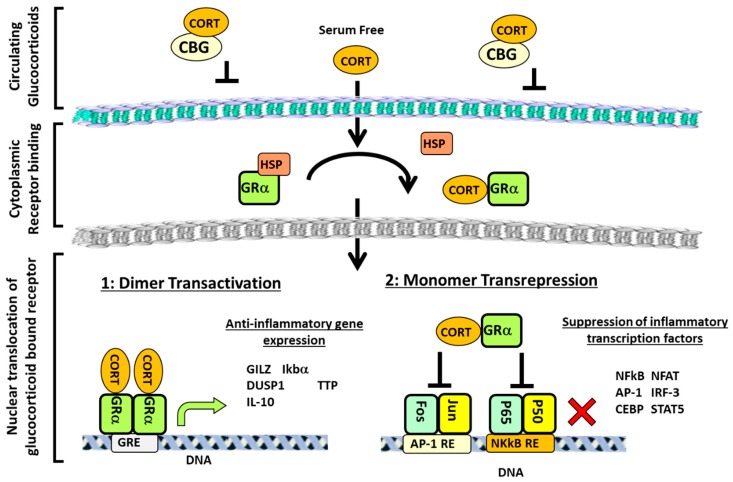Figure 1.
Overview of glucocorticoid (GC) signalling pathways. The majority of glucocorticoids (GCs) in the circulation are bound by corticosteroid-binding globulin (CBG), which prevents diffusion across the membrane. However, free GCs can readily enter the cell, where they bind to the GR in the cytoplasm. This induces a conformational change in the glucocorticoid receptor (GR), which causes the dissociation of chaperone molecules, such as heat shock proteins (HSPs), to expose the nuclear localisation signal (NLS) and allow translocation of the GC/GR complex to the nucleus. Here, the GR can either dimerise to transactivate anti-inflammatory genes or signal as a monomer to inhibit pro-inflammatory transcription factors. Cortisol (CORT), nuclear factor of activated T-cells (NFAT), CCAAT-enhancer-binding proteins (or C/EBPs), nuclear factor kappa-light-chain-enhancer of activated B cells (NF-κB), p38 mitogen-activated protein kinases (p-38-MAPK), glucocorticoid induced leucine zipper (GILZ), secretory leukocyte protease inhibitor (SLPI), tristetraprolin (TTP), mitogen-activated protein kinase-1 (MKP-1), activator protein 1 (AP-1), signal transducer and activator of transcription 5 (STAT5), and response element (RE).

